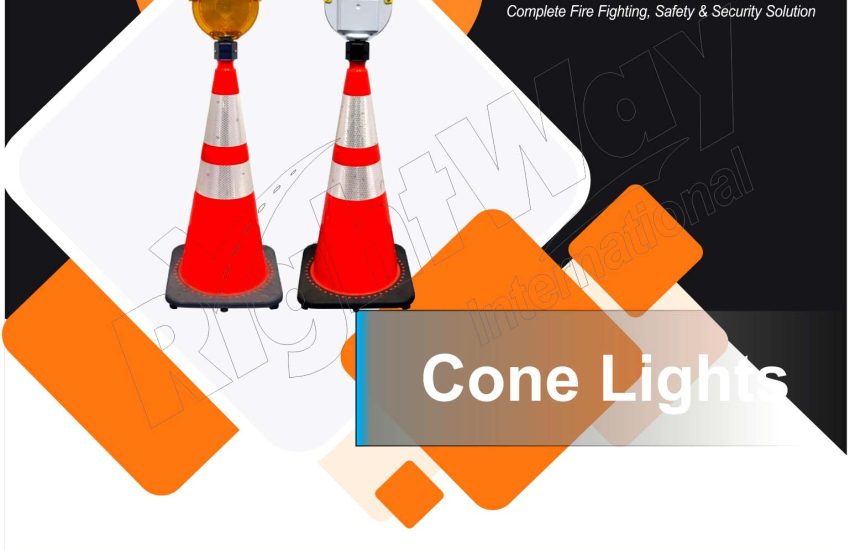Cone lights, also known as traffic cone light or safety cone light, are vital components used to enhance visibility and safety in various settings. Typically mounted on top of traffic cones, these lights serve multiple purposes, from guiding drivers in low visibility conditions to marking hazardous areas in construction zones. This article explores the purpose, types, and benefits of cone light, as well as their diverse applications.
Purpose of Cone Lights
- Visibility Enhancement: Cone light are designed to increase the visibility of traffic cones, especially in low-light or adverse weather conditions. This helps ensure that cones and their associated hazards are seen from a greater distance.
- Safety Improvement: By making traffic cones more noticeable, cone light help prevent accidents. They alert drivers and pedestrians to potential dangers or changes in road conditions, contributing to safer environments.
- Traffic Management: Cone light assist in directing and managing traffic flow, especially in roadwork zones, detours, and construction sites. They help in guiding vehicles and ensuring they navigate safely around work areas.
- Hazard Marking: In addition to road use, cone light are used to mark hazards in other settings, such as industrial sites and public events. This makes it clear where caution is needed.
Types of Cone Lights
- LED Cone Lights: LED cone light are popular for their brightness, energy efficiency, and long lifespan. They provide a clear and visible signal, making them ideal for use in various conditions.
- Strobe Cone Lights: These light emit rapid, flashing bursts of light, making them highly effective at attracting attention. They are often used in high-traffic or emergency situations where immediate visibility is crucial.
- Flashing Cone Lights: Similar to strobe light but with a slower flash rate, flashing cone light provide continuous visual alerts. They are commonly used in roadwork zones and for general traffic control.
- Solar-Powered Cone Lights: Utilizing solar energy, these light are environmentally friendly and cost-effective. They charge during the day and provide illumination at night, reducing the need for battery replacements.
- Reflective Cone Lights: These cone light include reflective materials to enhance visibility even when not powered on. They are useful for maintaining visibility in varying light conditions.
Benefits of Cone Lights
- Enhanced Safety: Cone light improve safety by ensuring that traffic cones are visible in low-light conditions. This reduces the risk of accidents and injuries by alerting drivers and pedestrians to potential hazards.
- Increased Visibility: The bright illumination provided by cone light ensures that cones are seen from a distance, even in challenging weather conditions such as fog, rain, or darkness.
- Versatility: Cone light are adaptable to various environments, including roadwork sites, parking lots, and industrial areas. They can be used in numerous settings to enhance safety and visibility.
- Cost-Effective: Many cone light, especially solar-powered and LED models, are designed to be low-maintenance and energy-efficient. This helps reduce long-term costs associated with lighting.
- Easy Installation: Cone light are generally straightforward to install, often designed to fit securely onto standard traffic cones without requiring complex tools or procedures.
Applications of Cone Lights
- Roadwork Zones: Cone light are frequently used in roadwork and construction areas to mark detours, lane closures, and work zones. They help guide drivers and ensure they navigate safely around the area.
- Emergency Situations: In emergency scenarios, such as accident scenes or disaster response, cone lights help ensure that hazards are clearly marked and visible to emergency responders and passing traffic.
- Industrial Sites: Cone lights are used in industrial settings to mark hazardous areas, equipment, or obstacles, ensuring that workers are aware of potential dangers.
- Public Events: During public events or outdoor gatherings, cone light can be used to manage crowd flow, mark restricted areas, and ensure overall safety.
- Parking Lots: In parking lots and garages, cone lights help delineate space, guide vehicles, and ensure that any hazards or changes in direction are clearly marked.
Conclusion
Cone light are essential tools that enhance safety and visibility across a wide range of settings. By increasing the prominence of traffic cones and marking potential hazards, these lights contribute to safer environments for drivers, pedestrians, and workers alike. Their versatility, ease of use, and effectiveness make them valuable assets in traffic management, construction, emergency response, and beyond. Understanding the different types and benefits of cone light helps in selecting the most appropriate options for various needs, ultimately promoting safer and more efficient operations.


